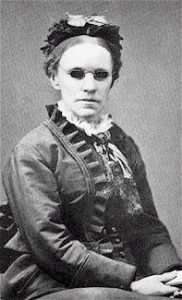The whole creation project hangs on it. For anything to be created, there has to be the possibility of it not being created. Anything that “comes to be” must come to be in time. God is not an exception because he is automatically excluded; he doesn’t “come” to be; he just is. Even describing him as eternal, as the classic confessions do, is inadequate. Eternity has direction; it always goes forward (for everything except God), and going forward requires a sense of time. Before creation, no time, though our minds are not able to grasp it. We can’t even speak theoretically of it, without words like before, when, pre-, post-, or during barging into the conversation—try it. We have to take God’s timelessness on faith because there’s no other way to take it, and yet no other assumption is possible. His first creation was time. Then imperishable spirits, then perishable matter.

He could have stopped with angels, with countless multitudes spun from his glory, giving back his praises, alive in endless bliss.
So why didn’t he? Why does his Spirit hover at this turning called “the beginning,” brooding over darkness? Why does the word come: “Let there be light”? (Especially from one who already is light?)
How about this: He wants to tell a story.
To time he adds space: three actual dimensions to hold actual objects. The first objects are foundational: earth and sky. From there he builds up to relational and consequences and progress—things stir, grow, feed, reproduce—die? (Maybe not yet.) A fabric of cause-and-effect covers the earth like a mat. Sun meets bud—more flowers. Root meets earth—more grass. Bull meets heifer—you get the idea. What’s needed now is a willful being who will make real choices with real consequences, who will act and be acted upon, whose actions will form a coherent narrative with a beginning, a middle, and an end.
We call that a story.
Someone told me once, God loves a good story. Don’t we all?
Some theologians speculate that Satan did not fall until after the creation of humans. He rebelled not because of a desire to usurp the throne, but because of revulsion at being expected to serve these puny beings. Humans were the prime cause of his defection, not the Almighty. I don’t know if that’s true–Isaiah 14:12 suggests there’s more to it. But it’s an interesting thought: what if Satan didn’t become part of the story until there was a story? Then he assumed an antagonist role, infiltrated earth, told the biggest whopper of all time and bound himself to the consequences. What if?
One common complaint about God—if he’s just up there somewhere, entertaining himself with our misfortunes like some Game of Thrones fan, then I want nothing to do with him. But to say he loves a good story doesn’t mean we are a mere diversion. It means that Story itself is far more significant than we ever thought, a grand sweeping narrative that is as much for us as it is for him. It shapes us, makes us, and in the next life it will amaze us forever.
And it all began with Let there be . . . Which may be another way of saying, Once upon a time . . .
 and preaching the word to everyone who walked through his door. That’s a strange ending, until we realize it’s not really an ending at all. The story goes on, and we’re in it. But with Revelation, a notoriously frustrating book for many readers, we get a divine view of the heavens and the earth that God created in Genesis 1:1. Terrible, glorious, frightening, and encouraging events unfold as the curtain rings down on this present age.
and preaching the word to everyone who walked through his door. That’s a strange ending, until we realize it’s not really an ending at all. The story goes on, and we’re in it. But with Revelation, a notoriously frustrating book for many readers, we get a divine view of the heavens and the earth that God created in Genesis 1:1. Terrible, glorious, frightening, and encouraging events unfold as the curtain rings down on this present age.



 past to encourage us. Though they are dead, yet they speak (see Hebrews 11:4). We can’t hear George Whitefield or Charles Spurgeon or Jonathan Edwards preach, but we can hear Charles Wesley, John Newton, and Martin Luther through the songs they wrote. Singing connects us to the flow of church history and the work of the Holy Spirit in every age. We don’t just hear about that history—we hear it, in the songs we sing.
past to encourage us. Though they are dead, yet they speak (see Hebrews 11:4). We can’t hear George Whitefield or Charles Spurgeon or Jonathan Edwards preach, but we can hear Charles Wesley, John Newton, and Martin Luther through the songs they wrote. Singing connects us to the flow of church history and the work of the Holy Spirit in every age. We don’t just hear about that history—we hear it, in the songs we sing.













